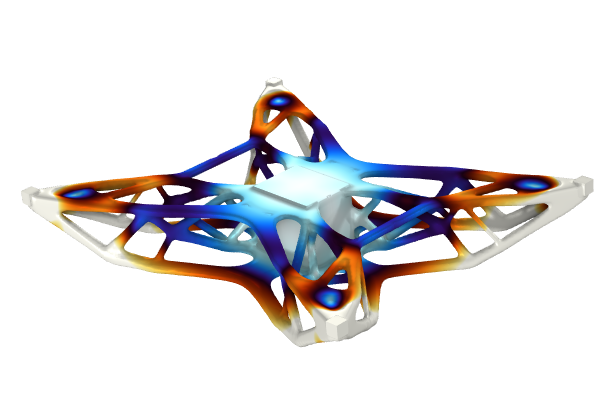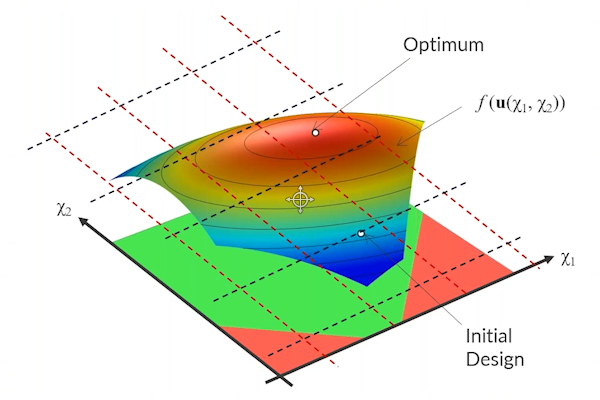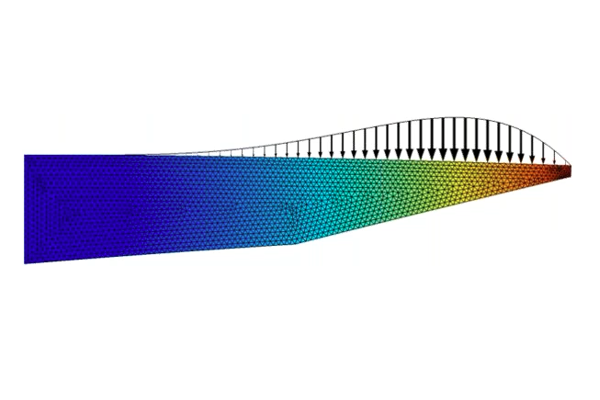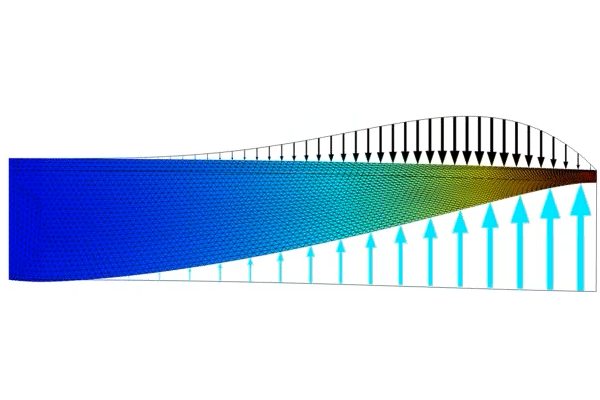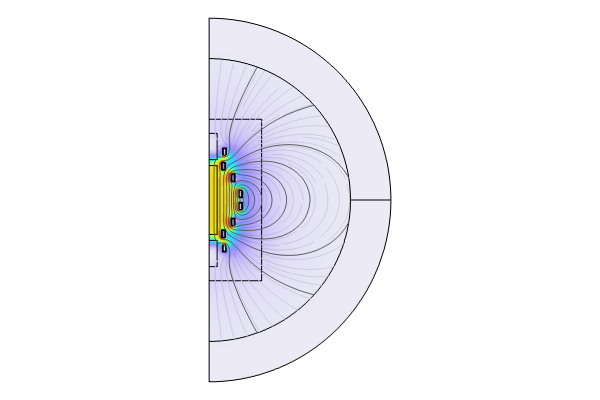Performing Optimization in COMSOL Multiphysics®
Optimization is the mathematical process of finding the optimal version of a design or process. This is achieved through a series of iterations where specific design aspects are varied, such as the dimensions, material properties, operating conditions, etc., in order to meet an objective, such as the performance of a design, the need to fall under a specific criteria, etc. An example of this could be minimizing the amount of material needed to support a structure while maintaining structural integrity. In this 10-part course, you will get an introduction to optimization, learn how to perform multiple types of optimization using the COMSOL Multiphysics® software and the Optimization Module add-on, and, in the process, learn about the benefits of combining multiphysics simulation with optimization. You will also learn how to perform parameter estimation, where we estimate the values of the input parameters to a model from experimental data.
 The COMSOL Multiphysics UI showing the Model Builder with the Optimization solver selected, the corresponding Settings window, and the Graphics window showing the optimal cooling model's concentration profile.
In Part 5 of this course, you will perform an optimization study to adjust the cooling stream temperature of a reactor in order to maximize the production of an intermediary product.
The COMSOL Multiphysics UI showing the Model Builder with the Optimization solver selected, the corresponding Settings window, and the Graphics window showing the optimal cooling model's concentration profile.
In Part 5 of this course, you will perform an optimization study to adjust the cooling stream temperature of a reactor in order to maximize the production of an intermediary product.
The focus of this course is how optimization is incorporated with a completed, solved model. In some examples, we will complete a full model build from start to finish before implementing the optimization analysis. In most exercises, however, we will start with a model where only the optimization is missing. Note that each part of this course will include demonstrations as well as downloadable model files so that you can gain hands-on experience. With this, you will apply optimization to a variety of different problems in different application areas.
Note: This course is meant for users that are familiar with COMSOL Multiphysics®. If you are new to the software, we strongly recommend either attending a live, introductory training and/or completing the introductory tutorial series before starting this Learning Center course.
You can find a synopsis of the topics covered in each part below.
Part 1: Introduction to Optimization
- Optimization terminology
- Types of optimization problems
- Common optimization tasks
- Parametric sweep & batch sweep
Part 2: Using Parametric Sweeps to Perform Optimization
- Parametric optimization
- Preparing the forward model simulation for optimization analysis
- Parametric Sweep study set up
Part 3: Using the Optimization Study Step
- Introduction to performing optimization using the software
- Optimization workflow
- Setting up optimization in COMSOL Multiphysics®
- How to approach setting up the optimization problem
- Formulating the objective function
- Selecting the optimization solver
Part 4: Using Optimization Studies to Perform Parameter Optimization
- Adding, setting up, and computing an optimization study
- Important settings in the Optimization study node
- Using various optimization solver methods
- Parameter optimization
Part 5: Optimizing Multiple Parameters and Understanding Optimization Solvers
- Multiparameter optimization
- Optimization application examples
- Optimization solvers
- Understanding various solvers
- Gradient-based solvers
- Comparison of algorithms
- Derivative-free solvers
- Optimization Tutorials app
Part 6: Using the Shape Optimization Interface and Study Step
- Introduction to shape optimization
- Parametric representation of boundaries
- Regularization
- Built-in features for shape optimization
Part 7: Using the Curve Fitting and Parameter Estimation Study Steps
- Introduction to parameter estimation
- General Parameter Estimation app
- Steady state, time dependent, or frequency domain
- Curve Fitting study versus Parameter Estimation study
Part 8: Performing Parameter Estimation and Introduction to Topology Optimization
- Parameter estimation
- Important settings
- Fitting measured data to estimate material properties
- Weighted objective functions
- Introduction to topology optimization
- Key implementation issues
- Built-in features for topology optimization
Part 9: Using the Topology Optimization Interface and Study Step
- Topology Optimization interface
- Settings and physics feature nodes
- Density Model feature
- Topology Optimization study
- Setup and settings
- Topology Link node under materials
- Exporting the optimized topology & validation
Part 10: Topology Optimization Applications and Comparing Optimization Techniques
- Topology optimization examples
- Comparison of methods
- Dimensional optimization
- Shape optimization
- Topology optimization
- Miscellaneous topics related to optimization
- Features introduced in version 6.0
- Multistudy optimization
- Optimization with LiveLink™ for CAD
 The COMSOL Multiphysics UI showing the Model Builder with expanded Filer options, the corresponding Settings window, and the Graphics window with the MBB beam model.
The optimized topology for an MBB beam is exported into a new component for analysis. Example from Part 9 of this course.
The COMSOL Multiphysics UI showing the Model Builder with expanded Filer options, the corresponding Settings window, and the Graphics window with the MBB beam model.
The optimized topology for an MBB beam is exported into a new component for analysis. Example from Part 9 of this course.
After completing the course, you will understand what optimization is and know about the different types of optimization and the related terminology. You will also understand how optimization is performed and know which solver methods are best suited for different problems. Moreover, you will be familiar with the optimization capabilities and features within COMSOL Multiphysics® and the Optimization Module.
Please note that the videos featured in this course were taken from a past event; because of this, some slides feature a daily agenda that is not relevant to this course.
このページに関するフィードバックを送信, または サポートに連絡 してください.

